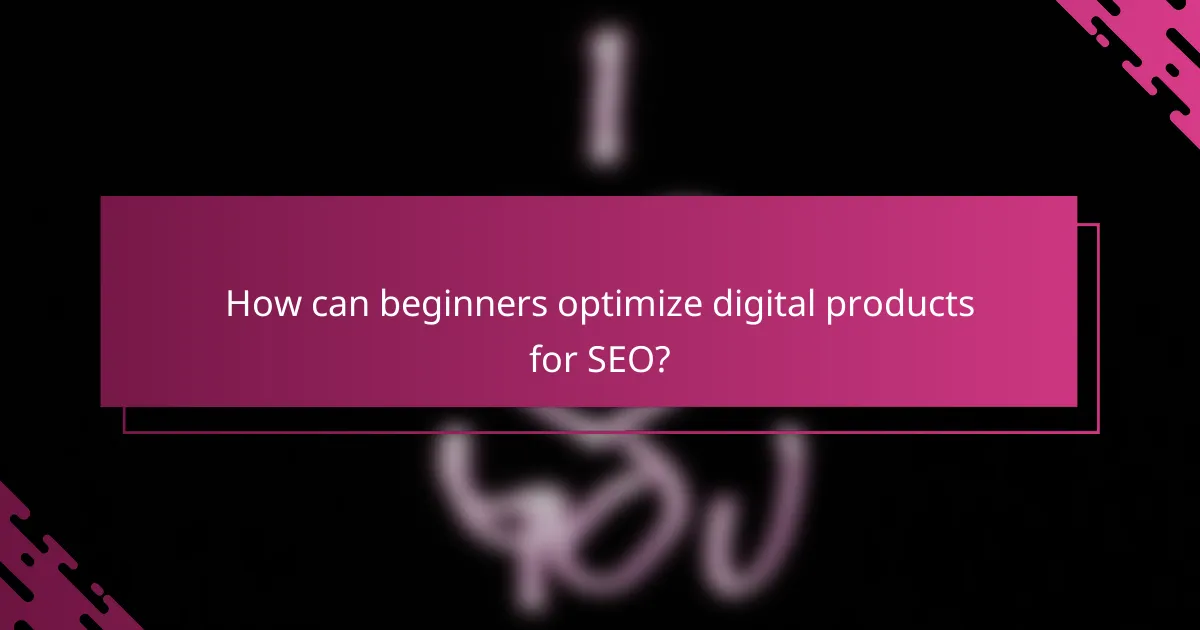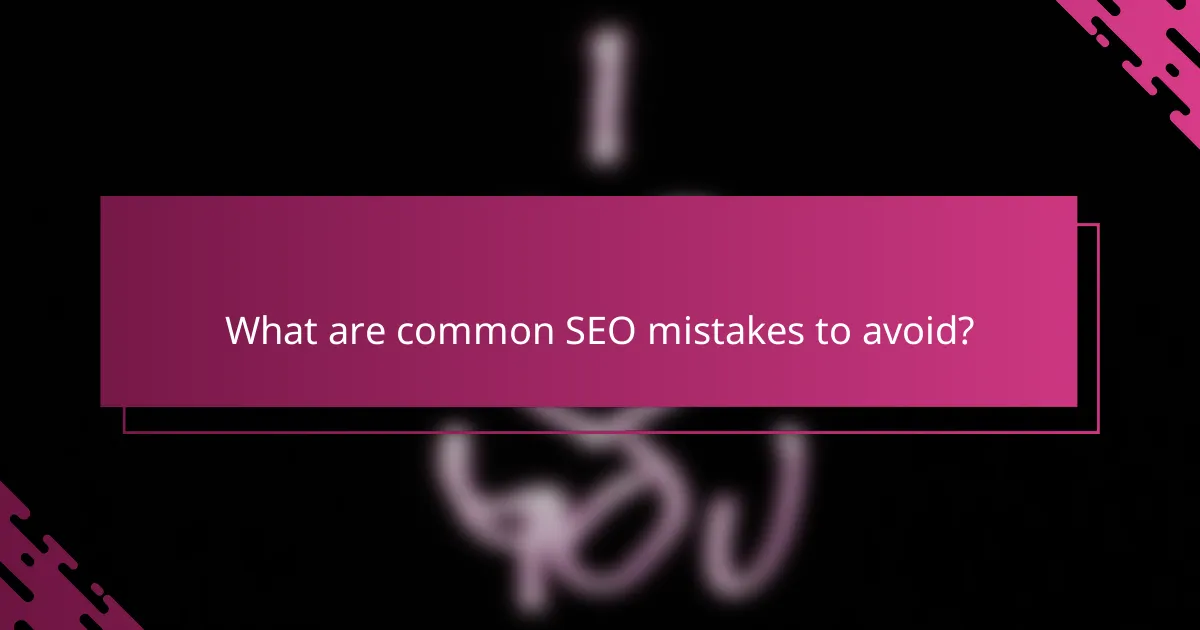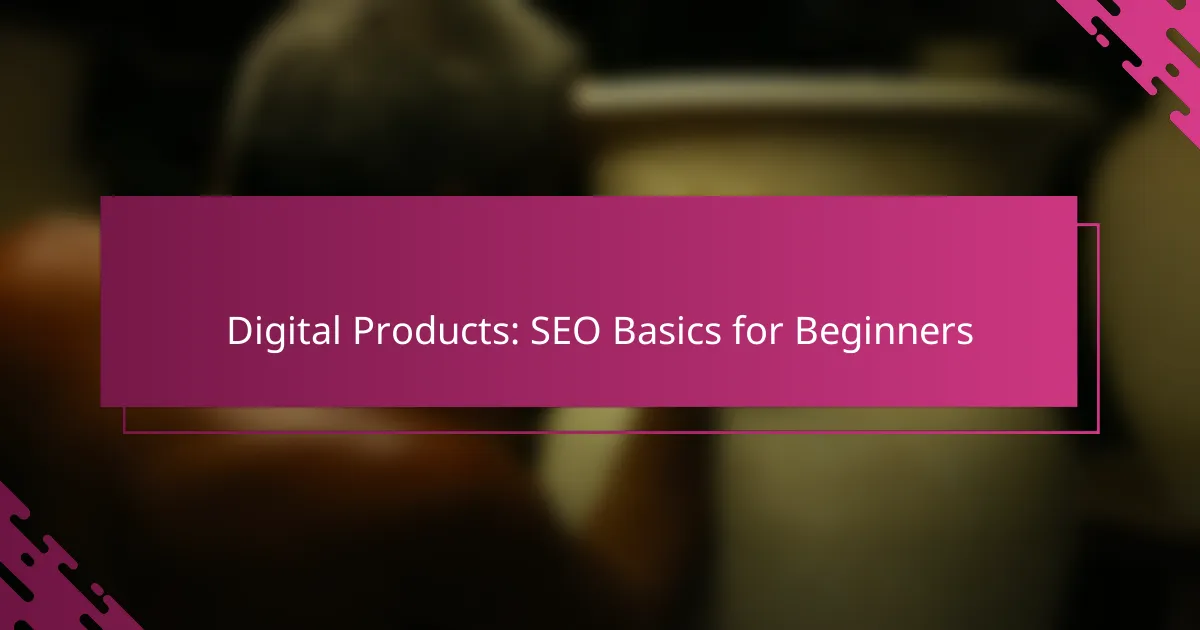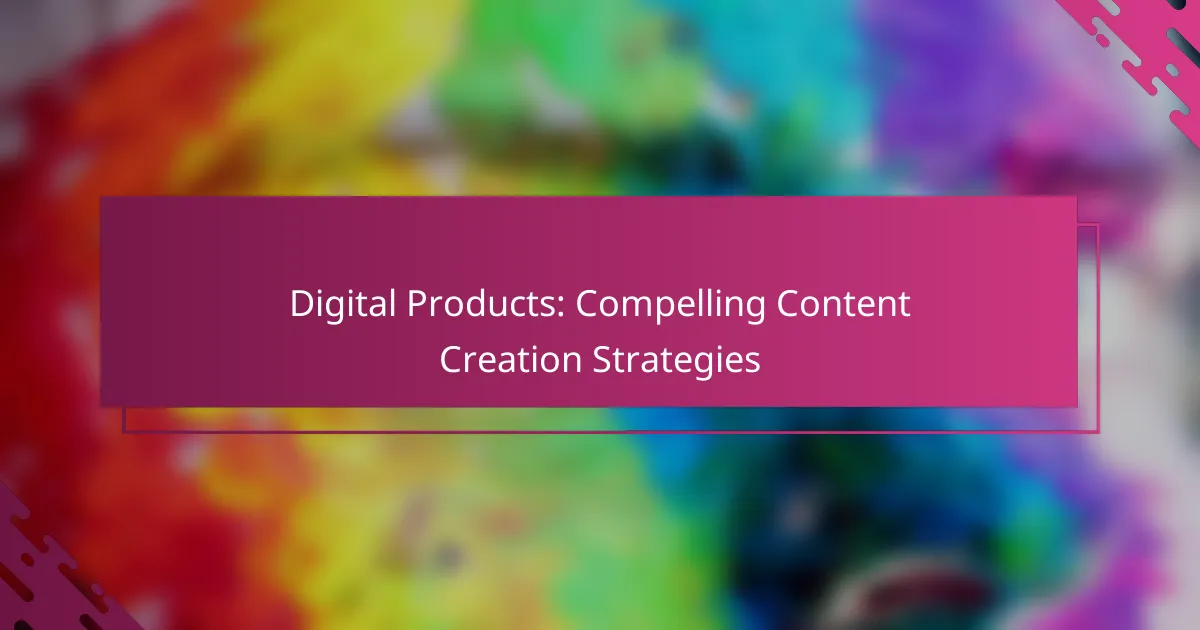Understanding the basics of SEO is essential for beginners looking to optimize digital products effectively. By focusing on keyword research, on-page techniques, and content quality, you can enhance your product’s visibility in search engine results. Implementing best practices such as descriptive titles and engaging meta descriptions will not only improve traffic but also boost user engagement.

How can beginners optimize digital products for SEO?
Beginners can optimize digital products for SEO by focusing on keyword research, on-page techniques, content quality, mobile optimization, and page speed. These elements work together to improve visibility in search engine results, driving more traffic and potential customers to your products.
Keyword research tools
Keyword research tools help identify the terms and phrases potential customers use when searching for products. Popular options include Google Keyword Planner, Ahrefs, and SEMrush, which provide insights into search volume, competition, and related keywords. Beginners should focus on long-tail keywords, as they often have lower competition and higher conversion rates.
Using these tools effectively involves analyzing the keywords’ relevance to your product and incorporating them into your content strategy. Aim for a mix of high-volume and niche keywords to capture a broader audience while still targeting specific needs.
On-page SEO techniques
On-page SEO techniques involve optimizing individual web pages to rank higher in search results. Key practices include using relevant keywords in titles, headers, and meta descriptions, as well as ensuring proper URL structure. Additionally, incorporating internal and external links can enhance the user experience and improve SEO.
Beginners should also focus on using header tags (H1, H2, H3) to organize content clearly. This not only aids SEO but also makes it easier for users to navigate your site.
Content quality and relevance
High-quality, relevant content is crucial for SEO success. Content should address the needs and questions of your target audience, providing valuable information that encourages engagement. Aim for well-researched articles, guides, or product descriptions that are informative and easy to read.
Regularly updating content can also boost SEO, as search engines favor fresh information. Consider adding new insights, statistics, or user-generated content to keep your offerings relevant and appealing.
Mobile optimization strategies
Mobile optimization ensures that digital products are accessible and user-friendly on smartphones and tablets. With a significant portion of web traffic coming from mobile devices, responsive design is essential. This means your website should automatically adjust to different screen sizes and orientations.
Additionally, consider optimizing images and using mobile-friendly navigation to enhance user experience. Tools like Google’s Mobile-Friendly Test can help evaluate how well your site performs on mobile devices.
Page speed improvements
Page speed is a critical factor in SEO, as slow-loading sites can lead to higher bounce rates and lower rankings. To improve page speed, compress images, leverage browser caching, and minimize HTTP requests. Tools like Google PageSpeed Insights can provide actionable recommendations for optimization.
Beginners should aim for a loading time of under three seconds. Regularly monitoring page speed and making adjustments as needed can significantly enhance user experience and SEO performance.

What are the best SEO practices for digital products?
The best SEO practices for digital products focus on optimizing visibility and user engagement. Key strategies include using descriptive titles, creating engaging meta descriptions, and implementing header tags effectively.
Using descriptive titles
Descriptive titles are crucial for SEO as they inform both search engines and users about the content of your digital product. A good title should include relevant keywords while remaining concise, ideally under 60 characters.
For example, instead of a vague title like “E-book,” use “Beginner’s Guide to Digital Marketing E-book.” This specificity helps improve search rankings and attracts the right audience.
Creating engaging meta descriptions
Meta descriptions serve as a summary of your product’s content in search results, influencing click-through rates. Aim for 150-160 characters, incorporating primary keywords and a clear call to action.
An effective meta description for an online course might read, “Enroll in our comprehensive Digital Marketing Course and boost your skills today!” This approach encourages users to click on your link over others.
Implementing header tags
Header tags (H1, H2, H3) structure your content, making it easier for search engines to understand and for users to navigate. Use H1 for the main title, H2 for major sections, and H3 for subsections to create a logical hierarchy.
For instance, if your digital product is a software tool, your H1 could be “Advanced Project Management Software,” with H2s for features, pricing, and user testimonials. This organization enhances readability and SEO performance.

How does keyword research impact digital product SEO?
Keyword research is crucial for digital product SEO as it helps identify the terms potential customers use to search for products. By understanding these keywords, businesses can optimize their content to improve visibility and attract relevant traffic.
Identifying target audience keywords
To effectively identify target audience keywords, start by brainstorming terms related to your digital product. Use tools like Google Keyword Planner or Ahrefs to discover popular search queries and their search volumes. Focus on keywords that align with your product’s features and benefits.
Consider the intent behind the keywords. Are users looking for information, or are they ready to make a purchase? Tailoring your keyword strategy to match user intent can significantly enhance your SEO efforts.
Long-tail keyword benefits
Long-tail keywords, which are typically longer and more specific phrases, can be highly beneficial for digital product SEO. They often have lower competition compared to broader keywords, making it easier to rank higher in search results. For example, instead of targeting “digital camera,” consider “best digital camera for travel photography.”
Using long-tail keywords can also attract more qualified leads. Users searching for specific phrases are often further along in the buying process, increasing the likelihood of conversion. Incorporate these keywords naturally into your content to improve relevance and engagement.

What tools can assist with SEO for digital products?
Several tools can enhance SEO for digital products by providing insights into traffic, keyword performance, and competitive analysis. Utilizing these tools effectively can lead to improved visibility and higher search rankings.
Google Analytics
Google Analytics is a powerful tool that tracks website traffic and user behavior. It provides insights into how visitors interact with your digital products, allowing you to identify popular content and areas needing improvement.
To maximize its benefits, set up goals to measure conversions and use segmentation to analyze different user groups. Regularly review reports on user acquisition, engagement, and conversion rates to inform your SEO strategies.
SEMrush
SEMrush is an all-in-one SEO tool that offers keyword research, site audits, and competitive analysis. It helps you identify high-traffic keywords and assess your website’s performance against competitors.
Utilize its keyword magic tool to discover relevant keywords and their search volumes. Regularly conduct site audits to identify technical SEO issues that could hinder your digital product’s visibility.
Ahrefs
Ahrefs is known for its robust backlink analysis and keyword research capabilities. It allows you to explore your competitors’ backlink profiles, helping you identify potential link-building opportunities.
Use Ahrefs to track your keyword rankings over time and analyze the organic traffic potential of different keywords. Regularly check for broken links on your site and fix them to maintain a healthy SEO profile.

What are common SEO mistakes to avoid?
Common SEO mistakes can significantly hinder your website’s visibility and performance. Avoiding these pitfalls is crucial for improving search engine rankings and attracting organic traffic.
Ignoring mobile optimization
Mobile optimization is essential as a significant portion of web traffic comes from mobile devices. Websites that are not mobile-friendly may experience higher bounce rates and lower rankings on search engines.
To ensure mobile optimization, use responsive design techniques that adapt your site layout to different screen sizes. Test your site on various devices to identify and fix usability issues.
Overlooking meta tags
Meta tags, including title tags and meta descriptions, play a vital role in SEO by providing search engines with information about your content. Neglecting these tags can lead to missed opportunities for higher click-through rates.
Craft unique and descriptive meta tags for each page, incorporating relevant keywords. Aim for title tags under 60 characters and meta descriptions around 150-160 characters to ensure they display correctly in search results.
Neglecting site speed
Site speed is a critical factor for user experience and SEO rankings. Slow-loading websites can frustrate users and lead to higher abandonment rates, negatively impacting your search visibility.
To improve site speed, optimize images, leverage browser caching, and minimize HTTP requests. Aim for a loading time of under three seconds, as studies show that users expect fast performance.

How can content marketing enhance SEO for digital products?
Content marketing can significantly boost SEO for digital products by creating relevant, engaging material that attracts organic traffic. By providing valuable information, brands can improve their visibility on search engines, leading to higher rankings and increased sales.
Creating valuable blog content
Valuable blog content serves as a foundation for effective content marketing and SEO. Focus on topics that address your audience’s pain points and interests, using keywords strategically to enhance searchability. Aim for posts that are informative, engaging, and at least 1,000 words long to provide depth.
Incorporate multimedia elements like images, videos, or infographics to enrich the user experience and keep visitors on your page longer. This engagement can positively influence your search rankings. Regularly update your blog with fresh content to maintain relevance and authority in your niche.
Utilizing social media for promotion
Social media platforms are powerful tools for promoting your content and improving SEO. Share your blog posts across channels like Facebook, Twitter, and LinkedIn to reach a wider audience. Tailor your messaging to fit each platform’s unique style and user expectations.
Engage with your audience by responding to comments and encouraging shares, which can drive traffic back to your website. Consider using paid advertising on social media to further amplify your reach, especially for high-value content that can convert leads into customers.



